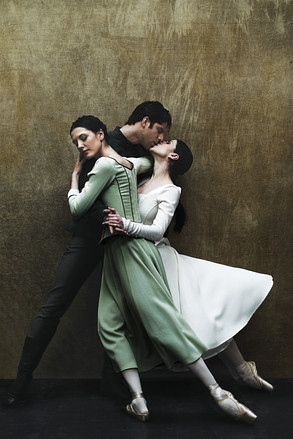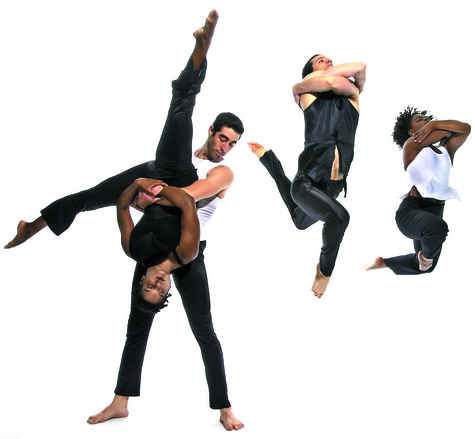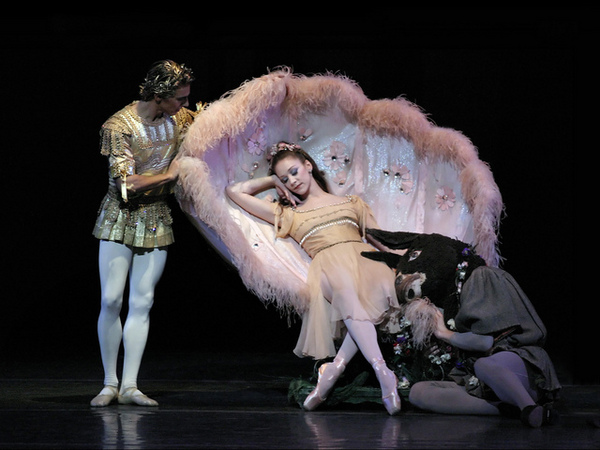Dear Reader,
In order not to tempt me to write posts, when I have other, less tempting things to do, I am declaring a hiatus here for the next few weeks.
But to not leave you completely high and dry, here are the dances in New York I would go see (and likely will go see) in these last weeks of the heavy dance season before the dog days (and the Lincoln Center Festival) set in.
For modern and postmodern dance, I am looking forward to:
* Sarah Michelson’s Dover Beach at the Kitchen next week, June 9, Tuesday through Saturday. (This will likely sell out–so get your tickets soon.) Here’s a profile I wrote on the always surprising choreographer at her last New York premiere, Dogs at BAM. And–this just in–here’s her fantastically interesting interview with Time Out editor and Times writer Gia Kourlas. (To get Michelson to talk about advanced work is a feat, so this is a real treat.)
* Pam Tanowitz’s debut at Dance Theater Workshop with likely another compellingly mysterious work (in a quirky Cunningham vein) Thursday June 18 through the 20. (DTW has a short video here which conveys the style if not the lusciousness.)
* What looks like an interesting variation on the shared-evening rubric by Ben Munisteri and Rebecca Stenn, June 11 through 14, at Joyce SoHo. The press release says,
Munisteri and Stenn remix the other’s choreography…. Their rules: Each choreographer creates a 10-minute dance. Then the other choreographer (who is not allowed to add any new movement vocabulary) recomposes the original material to render something entirely new (the way a DJ would create a remix).
* Kate Weare at Danspace Project in the East Village June 25 through 27. Weare combines sly wit, emotional fierceness, and vulnerability.
* At the Joyce, Philadanco, with a New York premiere by hip-hop postmodernist Rennie Harris, June 16 through 21; and Larry Keigwin and Nicholas Leichter alternating days June 23 through 28. Keigwin can be too cute, but this piece, to Ravel’s heavy Bolero was given a “wow!” by my esteemed colleague Roslyn Sulcas at the Times. The musically astute Leichter tends to set club-dance vocab within a modern dance structure–and he’s bold about his musical choices. He served as choreographer for the Brooklyn Philharmonic’s Rite of Spring and this time is doing a dance to Stevie Wonder–how can you lose? Here’s a clip. (Confidential to Eva: the next best thing to a musical–or maybe better, eh?)
Nicholas Leichter Dance in Free the Angels. Photo by Tom Caravaglia.
And now for ballet:
This week, Russian choreographer Alexei Ratmansky makes his much-awaited debut as resident choreographer at American Ballet Theatre with On the Dnieper, part of a Prokofiev triple bill that also includes Balanchine’s wrenching Prodigal Son.

Veronika Part (green), Paloma Herrera (white), and Marcelo Gomes in Ratmansky’s On the Dnieper. Photo by Fabrizio Ferri for ABT.
This debut has been so anticipated, given the light Ratmansky brought to the future of New York City Ballet with two premieres there, that he can hardly equal our hopes. Best probably to go with no expectations. Ratmansky is very smart and, even better, very wise, and if at first he doesn’t succeed, he will later.
[UPDATE Monday late night: He succeeded.
See the * at the very bottom of
this post for more on this valiant night.]
Next week at ABT is Giselle, which if you haven’t seen, you must, even if you don’t normally go in for story ballets. Dance is at the heart of the story, about a peasant maiden whose joy is dancing, and for whom dancing–and loving–is too dangerous to survive. I have brought willful friends who deliberately limit their ballet diet to plotless Balanchine and they were won over. (Here’s my review of Nina Ananiashvili and Angel Corella last year. Scroll down a bit. And here’s a short review of Diana Vishneva in the role.) I recommend the Russians: Ananiashvili in her last season at ABT, Kirov-ABT ballerina Diana Vishneva, and young Bolshoi sensation Natalia Osipova, in her first season with the company.
From June 15 through the 20th ABT offers another Romantic ballet, La Sylphide, on a double bill with Paul Taylor’s Airs, another welcome addition. How nice to see La Sylphide directly after Giselle. I’ve never seen ABT’s version, so it’s hard to say who would be best as the Sylph. I’m most curious about Hee Seo, because it’s such a big role for a corps member, with David Hallberg, who has won me over finally and completely. (I know, I’ve been slow.) For Veronika Part fans, La Sylphide offers several outings. I’m going to sit her out for this role. I’m not confident that she can be sylphic– mischievous and light. All Part’s mystery rests with sadness and majesty. She’s an introverted dancer, almost a contradiction in terms. But I will come out for her Swan Lake, which, people tell me, is her best role. She’s performing it on Friday June 26, near the end of a week of Swan Lakes.
ABT finishes out its season–in July, so I’ll be brief, as I wanted to confine myself to this month–with Ashton’s alternately wondrous and very funny Sylvia (she’s the Greek nymph you’ve never heard of), for which Gillian Murphy, the mistress of comedy, is perfectly suited and which Vishneva is dancing for the first time. (Vishneva’s first Ashton, a couple of years ago, was his Midsummer Night’s Dream, in which she interpreted “fairy queen” so literally and so imaginatively as to make you lean forward in your seat in wonder: in her love dance with Oberon, she dangled and wafted her limbs like a dandelion blown and lost to the wind.) The final offering is MacMillan’s Romeo and Juliet, with Murphy and Hallberg debuting. (The ballet will be interesting to see after the plain but not naturalistic so much as natural–when it felt like it–Mark Morris version. I am in the minority: I loved the Morris. I wonder what its adamantly plainspoken magic will do to the MacMillan for me).
I should have written already about New York City Ballet, whose spring season always begins a couple of weeks before ABT’s.
I am too late to recommend that you see the Benjamin Millepied premiere, in which he takes a great leap forward as a choreographer. He’s developed a whole language, and it’s not, as some critics have suggested (because they stop looking when they think they spy Eurotrash), the usual post-Forsythian spasm fest. It’s more eloquent, more varied, at once more creaturely and more distilled. What’s most awful about the push-and-pull of Forsythe imitators is its rhythmic predictability –which confirms the choreographers are on autopilot–while Millepied’s rhythms, to an eerily compelling Gorecki score, are a prism of subtle shifts in feeling and tone. I hope the dance will return this winter.
It’s also too late to catch the captivating Robert Fairchild channeling Baryshnikov’s dreamer (Baryshnikov originated the role) in Robbins’s Opus 19/The Dreamer. His performance doesn’t feel like an imitation, it feels like a possession, that’s how complete, and uncanny, the transformation is. The impetus of his dream is Janie Taylor at her waifish, mercurial best–flung about by inner impulse one moment and moving with crisp precision the next. Taylor is one of the few ballerinas who loses neither herself nor the role to the idiosyncrasies of both. It’s such a rare, essential, paradoxical gift. Here’s more, by my esteemed colleague Tonya Plank aka Swan Lake Samba Girl on the miracle of Fairchild and Taylor together.
You can catch each of them separately this week: Fairchild in Balanchine’s spiky romance, Stravinsky Violin Concerto, and Taylor (along with Jennie Somogyi! and Wendy Whelan!) in Balanchine’s lushly romantic parlor dance, Liesbeslieder Walzer (which a few of us discussed a couple of years ago here and here).
It’s also not too late to catch Balanchine’s Art-Decoish distillation of Swan Lake, where Wendy Whelan, with her modernist intelligence, is his perfect Odette. You have one more day, Saturday June 6 matinee. It may not come back next year, as this is its second go. Sebastien Marcovicci is her noble prince, elongated and buoyant after a rather squashed Chaconne this winter.
Next week, we get a chance to see an early Christopher Wheeldon ballet, Mercurial Manoeuvres, which he made even before the company created the post of resident choreographer for him.
The NYCB season ends with the perfect final ballet: Balanchine’s magical Midsummer Night’s Dream. The casting isn’t up yet, but it has many great roles, so it’s hard to go wrong.
Oberon (Joaquin De Luz), Titania (Maria Kowroski), and Bottom in Balanchine’s A Midsummer Night’s Dream. Photo by Paul Kolnik for the NYCB.
I’m sure I’ve forgotten something crucial–and will likely end up adding it here.
Otherwise, have a lovely first month of summer.
~Apollinaire
*Short PS on ABT’s Prokofiev triple bill, which includes, besides the Ratmansky premiere and Prodigal Son, the company premiere of Desir by longtime National Ballet of Canada choreographer James “Cinderella” Kudelka:
By the end of the night, I’d dubbed the program The Impossible Dances–impossible either because of the contrary demands of score and libretto (On the Dnieper), of modes and moods (Prodigal), or of steps and their intent (Desir). Given these conditions, everyone performed admirably.
Prodigal mixes a sardonic sense of humor with straight-out pathos, and Constructivist Expressionism (yeah, that’s my term) with naturalism. But all the Sons I’ve seen (Joan Boada at SF Ballet, and at NYCB Daniel Ubricht and no less than Peter Boal and Damian Woetzel, all in the last decade) have tilted the ballet toward comedy, with the boy’s masklike open-mouthed shouts of rebellion and pounding of fists on thighs demonstrating his foolishness, not a stylized–a Primitivist–form of acting. ABT dancers have a better shot at the role because they’re used to stylized acting (for them, it’s usually 19th century mime).
Herman Cornejo was the best Prodigal Son I’ve seen, though he still has a ways to go. (For example, during the crawl back home, he needs to fall from his knees to his belly not like an athlete such as himself–with a rubbery rebound–but like a man so weary and worn, he cannot even rise to his feet.) Cornejo had the rash arrogance of a young tom: the cat does crazy things not out of habit but from thoughtless instinct and excess energy. He is not bad so much as callow.
ABT often takes a season to settle into recently acquired Balanchines, but already some details are brighter here than at New York City Ballet, such as when the regiment of goons bombard the Son with so many hands to shake, in syncopated rhythm, that he manages to grasp nary a one; or when the father forces the Son to bow in prayer with his sisters, and the boy sneaks his head up early (he knows his family won’t catch him out, as their pious heads will still be bowed).
With Desir, Kudelka is after a pronounced awkwardness. I admire his ambition to have the seams of the partnering–where often the aim is to be as smooth as possible–show, so instead of the pas de deux signifying the usual rapturous love, it suggests something more strenuous, more conscious, more worked on.
The problem is, the steps are so demanding and at such high speed that the awkwardness often looks inadvertent. The dancers did absolutely everything they could to make the stiff-legged moves look deliberate–part of a continuum from herky-jerky to smooth. Now Kudelka needs to do something so the dance can be equal to its idea. So many of the patterns are fantastic; it would be worth simplifying or slowing things down to bring out their meaning or at least their details. (Gillian Murphy was alone in fully registering the dance’s contrariness, but she’s always exceptional at mastering two dynamics at once, such as a noodling torso and steely legs.)
Finally, On the Dnieper (I know, you’ve been waiting): I thought Ratmansky did the best he could–which at times was a great deal–with a story that was too emotionally complex for a short ballet (it’s 40 minutes) and with music–winsome, striking music– that seemed to work against the story it was supposed to tell.
The story involves a soldier (Marcelo Gomes) who comes home to find the sweetheart he left behind (Veronika Part) still devoted to him. But he is in the mood for love–which means new love. When Paloma Herrera bounces into view, he wants her. And gets her–after the man to whom her parents have betrothed her (David Hallberg) beats him to a pulp. Herrera and Gomes run off, and Part is left crumpled and alone.
The ending is really affecting–abandonment always is–as is the opening scene where the soldier (Gomes) has come home to cherry blossoms in bloom and is overwhelmed with a placeless desire that spins his head (and his body, of course, this being ballet). But in between there just isn’t enough time to establish the characters. For example, what’s the attraction of this bouncy new girl? (Maybe it’s just that she mirrors the soldier’s own jagged energy: Herrera’s steps were very good at conveying not an ideal but a real woman–edgy and wanting always to be the center of attention.) And, other than being the soldier’s lover, who is this woman who has waited for him, and what was he to her that she would wait? Part is quivery with disappointment and abjection even before she has been rejected–and maybe that’s the point. It doesn’t matter who he is, she will always want him because she knows she will always lose him.
Still, the men are clearer: Hallberg’s character comes to the fore when he realizes his bride feels trapped. He endures paroxysms of emptiness and confusion. It’s a fantastic dance. Gomes establishes his character’s desire for novelty and his overwhelmedness right away, with antsy, swift shifts in direction that melt into a big sigh of happiness at the beauty and relief of being home. He sinks into the earth and looks up through the cherry blossoms to the night sky.
As the poster Michael points out on a Ballet Talk forum, the group (family, friends, villagers) is essential to the dance–and Ratmansky’s ways of showing the various kinds of force they exert on the lovers (snooping, ignoring, castigating) is ingenious. But the groups here still aren’t as clearly etched as in Russian Seasons or Concerto DSCH, both for New York City Ballet.
Ratmansky might have been better off doing a plotless ballet, freeing himself of the burden of story to establish cause and effect.
That said, On the Dnieper was never boring. The movement was delightful and surprising: lots of petit allegro (I wish the feet had been better lit) with the arms and torso moving in large arcs and long yet staccato lines. The feet seemed to move twice as fast as the body: actions are quick, feelings take time.



fyi, i saw la sylphide with Hee Seo and David Hallberg today and both were AMAZING. Hee Seo truly embodied the spirit and grace of a sylph! I truly now understand what “floating across the stage” means after watching her performance. It was beautiful! so enjoy swan lake 🙂
[Apollinaire responds]: Dee, Thank you for the report. I’m glad to hear Hee Seo gave a wonderfully floaty performance–and not surprised that Hallberg was amazing.